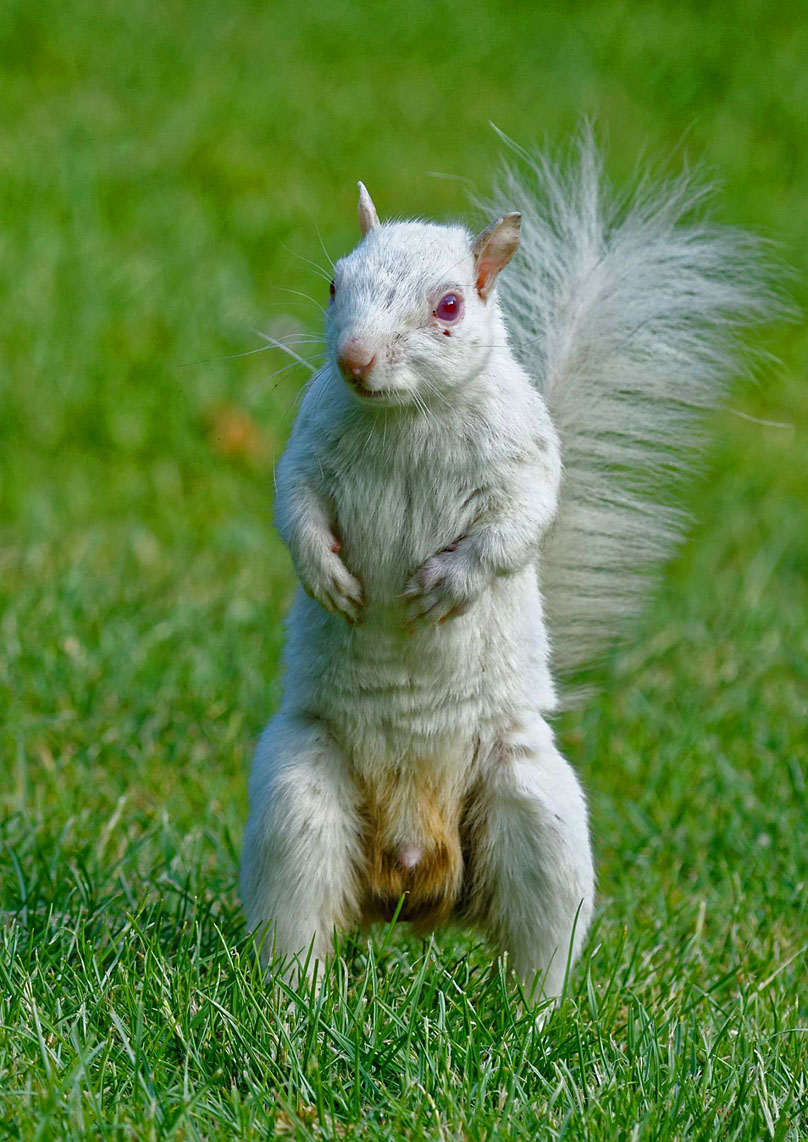Sciurids practice internal fertilization and, in common with most mammals, males have a penis bone, called a baculum, which maintains the erection during copulation. The breeding season of both species is complicated because it is strongly affected by external conditions, with cold weather, snow cover and availability of food all playing a part. Indeed, in prime habitat all squirrels may breed, while poor habitat and/or bad seed years may result in 80% of females failing to raise a litter. In males, social status is also important and, in The Eurasian Red Squirrel, Stefan Bosch and Peter Lurz note how it is the most dominant, older animals with the larges testes and highest body weight that account for most matings. Overall, in any given year, a population may have one or two breeding seasons, or may not breed at all.

If food has been plentiful during the year and the winter isn’t too harsh, most Reds and Greys will breed during December and January. Harsh winters tend to delay the activity, extending the season into February. If the food is also abundant during the spring, the squirrels may undergo a second round of matings during the summer, with most conceptions in June or July. It is mature females that tend towards two litters in good mast years. Males subsequently undergo a period of testicular regression, where the testes retract into the abdomen and the scrotum is empty, lasting between August and November.
Breeding may be drastically reduced or suspended altogether during periods of food shortage. In his 1979 book, Squirrel on my Shoulder, John Paling described difficulty obtaining squirrels for a documentary owing to no local animals breeding; further investigation revealed this to be a nationawide phenomenon, with all but a few isolated pockets of breeding. Paling noted that the good mast year of 1975 was followed by one of the driest years on record (1976), which resulted in “a staggeringly heavy nut crop” from the oak and beech that appeared “to have exhausted the trees’ capacity for bearing fruit for the very year when I took interest”. Consequently, very few squirrels bred during the 1977/78 winter illustrating just how critical body condition is for females coming into oestrus.
In Grey squirrels, testicular regression is very pronounced: the testes shrink by almost 90%, from about 7g to 1g. The prostate shrinks by about 75% and there is a similar decline in size of the paired bulbourethral glands that secrete a mucous substance into the urethra during sex. (The bulbourethral glands are also known as Cowper’s glands, after the 17th Century English anatomist, William Cowper, who first described them.)
During late November, the testes start to grow and descend into the scrotum, reaching full size by mid-December. When fully active, squirrel testes are sometimes darkly stained, presumably with urine. Males typically experience two periods of spermatogenesis (sperm production), one from December to February and a second from May to July, although there are a few reports of breeding throughout the year.
As both sexes become sexually active, scent becomes increasingly important and females in particular can spend up to five minutes scent-marking their ranges (see Scent-marking). Males subsequently spend time visiting these marking sites and clambering all over them, apparently extracting every bit of information and presumably leaving their own scent. Indeed, in his 1987 book The Natural History of Squirrels, John Gurnell notes that the reproductive season in females is triggered by the presence of males, specifically the presence of male urine. Experiments with captive Greys have failed to replicate this association and, in his book, Gurnell suggests that this may indicate that other environmental factors, such as space, may also be necessary to trigger the oestrous.






![Air gun 101: The differences between .177 & .22 – Which jobs they do best ? [Infographic]](https://airgunmaniac.com/wp-content/uploads/2020/09/g44-218x150.jpg)








































